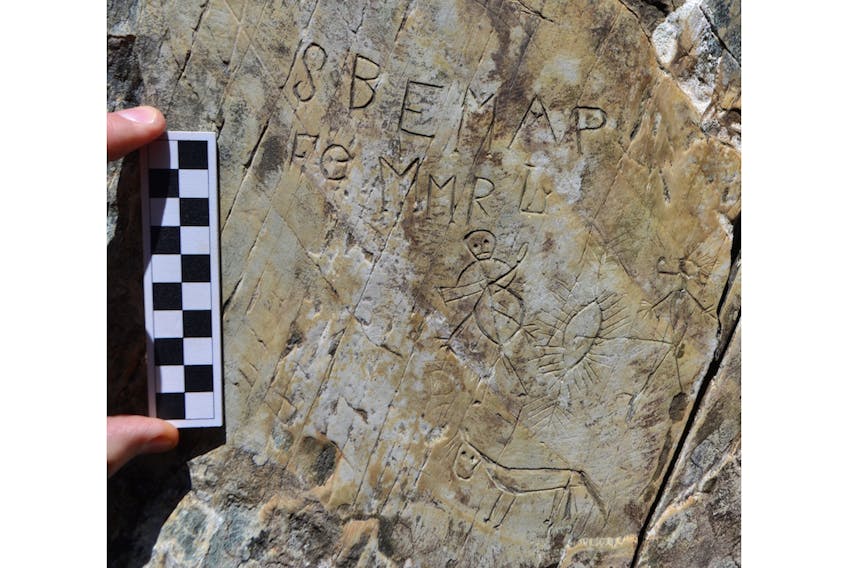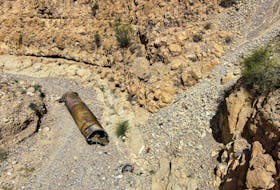Petroglyphs found in a cave in Conception Bay North may be the first historical indigenous drawings found on the island of Newfoundland, according to a professor at Memorial University.
Barry Gaulton, an associate professor in the department of archeology, said they were contacted by a resident of the area that had been told the location of the cave as a secret. Gaulton and his team went to investigate and were quite surprised by what they found.
“To the best of my knowledge, there’s no other known or recorded indigenous carving on the island of Newfoundland,” he told The Compass. “This would be the first.”
The petroglyphs were featured in the 2018 Provincial Archaeology Office Annual Review, as part of the Avalon Historic Petroglyph project. The other two petroglyphs highlighted were made by Europeans, according to the report.
Gaulton said they aren’t sure exactly when the carvings were made and it could range from the 1600s to the 1800s. He said this type of thing is notoriously difficult to date, based on any kind of inscriptions or the technique used.
“We’re saying it’s historic because it looks like it was carved with the point, or the edge, of a metal knife and because of the lettering of course. If the letters are contemporaneous with the glyphs these are historical period carvings for sure, but we can’t really pinpoint any particular period.”
Gaulton said what is more important than the date it was made is the fact that the cravings have direct parallels to indigenous carvings in other parts of Canada.
The carvings bear similarities to petroglyphs found in Peterborough, Ont., pre- and post-contact rock art of eastern Maine and Mi’kmaq petroglyphs at Kejimkujik Lake and Bedford Barrens in Nova Scotia.
“We believe it was an individual of the Algonquin speaking people’s who carved this,” Gaulton said. “I can’t say for certain if it was Mi’kmaq or Abenaki, it certainly seems that all evidence points to this being an indigenous carving as opposed to a European scratching something on this cave.”
Memorial University is keeping the exact location of the petroglyphs a secret, as it is in the process of working with the provincial government and indigenous groups to have the area protected. Gaulton said there are concerns interested people could overrun the area and damage the carvings.
Gaulton said since the project was highlighted in the annual review he’s been contacted by a number of other people who have leads of carvings or drawings. He said he’s a big advocate of community input in archeology and history and this is a prime example of why.
“This is sort of a real shout out to the person who contacted us,” he said. “It was only through a member of the public contacting us we were able to find this and record and research it.”
Gaulton said anyone who is aware of any historical carvings or drawings around the province should contact him at [email protected].









